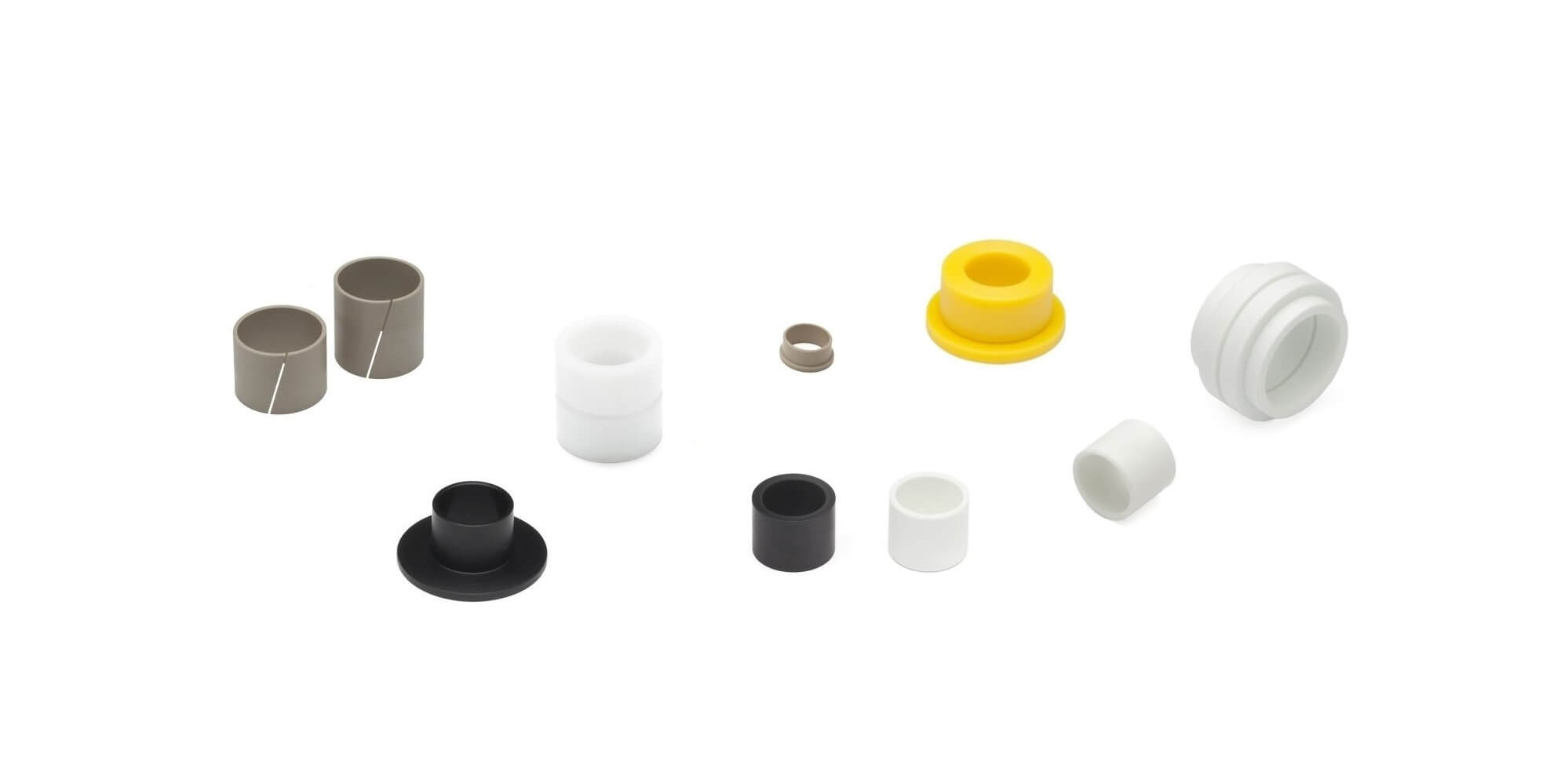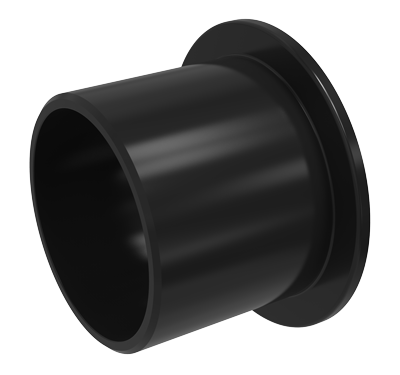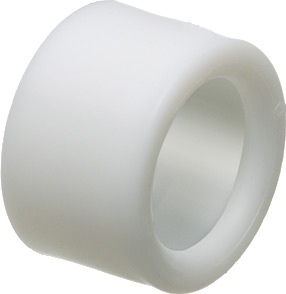
Where can I buy nylon bushings with FDA or RoHS compliance for certain industries like food processing?
If you are looking to purchase nylon bushings that comply with FDA (Food and Drug Administration) or RoHS (Restriction of Hazardous Substances) regulations for industries like food processing, here are some options to consider:
1. Industrial Suppliers and Distributors:
– Many industrial suppliers and distributors offer a wide range of nylon bushings that meet FDA or RoHS compliance requirements. These suppliers specialize in providing components for various industries, including food processing.
– Examples of well-known industrial suppliers and distributors include McMaster-Carr (https://www.mcmaster.com/), Grainger (https://www.grainger.com/), and MSC Industrial Supply (https://www.mscdirect.com/).
2. Specialty Manufacturers:
– Some manufacturers specialize in producing nylon bushings specifically designed for industries like food processing. These manufacturers understand the specific regulatory requirements and can provide bushings that meet FDA and RoHS compliance standards.
– Conduct a search for specialty manufacturers that focus on components for the food processing industry. They often have dedicated product lines or specific certifications for compliance with regulatory standards.
3. Online Marketplaces:
– Online marketplaces can be a convenient option to find nylon bushings with FDA or RoHS compliance. Platforms like Amazon (https://www.amazon.com/), eBay (https://www.ebay.com/), or Alibaba (https://www.alibaba.com/) have a wide variety of suppliers and sellers offering industrial components, including nylon bushings.
– While using online marketplaces, ensure that the sellers or suppliers explicitly mention FDA or RoHS compliance in their product descriptions or specifications. It’s also a good practice to verify the seller’s reputation and customer reviews before making a purchase.
4. Directly from Manufacturers:
– Contacting nylon bushing manufacturers directly can be another option to inquire about FDA or RoHS compliant products. Many manufacturers have websites where you can find their product catalogs, certifications, and contact information.
– Reach out to the manufacturers and inquire about their nylon bushing offerings that comply with FDA or RoHS regulations. They can provide detailed information about product specifications, compliance certifications, and assist you in finding the right bushings for your specific needs.
When purchasing nylon bushings for industries like food processing, it is essential to ensure that the products meet the specific compliance requirements. Look for bushings explicitly labeled as FDA-compliant or RoHS-compliant, and review the product documentation or certifications provided by the supplier or manufacturer.
Additionally, consider factors such as product quality, pricing, availability, and customer support when selecting a supplier or manufacturer for nylon bushings.
By exploring these options, you can find reputable sources to buy nylon bushings with FDA or RoHS compliance for industries like food processing.

What are the temperature and pressure limits of nylon bushings, and how do they impact their performance?
If you are interested in understanding the temperature and pressure limits of nylon bushings and their impact on performance, here’s a detailed explanation:
Temperature Limits:
– Nylon bushings have specific temperature limits that define their operating range. These limits are influenced by the thermal properties of nylon and its ability to withstand heat without significant degradation.
– The exact temperature limits can vary depending on the specific type and formulation of nylon used in the bushings. However, as a general guideline, nylon bushings typically have a temperature range of approximately -40°C to 120°C (-40°F to 248°F) for continuous operation.
– At temperatures beyond the upper limit, nylon bushings can experience softening, dimensional changes, reduced mechanical strength, and loss of self-lubricating properties. These effects can result in increased wear, increased friction, and potential failure of the bushings.
– Similarly, at temperatures below the lower limit, nylon bushings can become brittle and lose their flexibility, leading to reduced performance and potential cracking or fracturing.
Pressure Limits:
– The pressure limits of nylon bushings refer to their ability to withstand compressive forces without deformation or failure. Pressure limits are influenced by factors such as the material strength, design, and dimensions of the bushings.
– Nylon bushings, being a relatively softer material compared to metals, have lower pressure limits compared to materials like bronze or steel. However, they can still handle moderate to high loads in many applications.
– The pressure limits of nylon bushings can vary depending on factors such as the specific grade of nylon, the bushing design (e.g., wall thickness), and the specific application conditions.
– As a general guideline, nylon bushings can typically handle pressures in the range of 15 MPa to 35 MPa (2,175 psi to 5,075 psi) for static loads, and lower pressures for dynamic or oscillating loads.
Impact on Performance:
– Exceeding the temperature or pressure limits of nylon bushings can have significant impacts on their performance and longevity.
– When operating beyond the temperature limits, nylon bushings may experience increased friction, accelerated wear, and reduced load-carrying capacity. The bushings may lose their self-lubricating properties, leading to higher levels of heat generation and potential damage to the mating surfaces.
– Operating beyond the pressure limits can cause deformation, excessive wear, or even failure of the nylon bushings. The bushings may experience plastic deformation, leading to dimensional changes and compromised fit. Higher pressures can also lead to increased friction and heat, further affecting the performance and wear characteristics.
– It is crucial to consider the temperature and pressure limits of nylon bushings in the context of the specific application requirements. Factors such as the anticipated operating conditions, loads, speeds, and environmental factors should be taken into account when selecting and implementing nylon bushings.
– If the application involves extreme temperatures or high-pressure conditions that exceed the limits of nylon bushings, alternative materials or specialized bushing designs may be more suitable.
– It is recommended to consult the manufacturer’s documentation, engineering references, or seek guidance from experts to determine the appropriate temperature and pressure limits for specific nylon bushings and their impact on performance.
By understanding the temperature and pressure limits of nylon bushings and their impact on performance, you can make informed decisions when selecting and implementing these bushings in various applications.

Are there different types of nylon materials used in manufacturing nylon bushings, and how do they impact performance?
Yes, there are different types of nylon materials used in manufacturing nylon bushings, and they can have varying impacts on performance. Here’s a detailed explanation:
1. Nylon 6:
– Nylon 6, also known as polyamide 6 (PA6), is a common type of nylon material used in manufacturing bushings. It offers good mechanical strength, toughness, and wear resistance.
– Nylon 6 bushings provide reliable performance in various applications, particularly those with moderate loads and operating conditions. They are cost-effective and widely available.
2. Nylon 66:
– Nylon 66, or polyamide 66 (PA66), is another popular nylon material used for bushing manufacturing. It has similar properties to Nylon 6 but with enhanced strength, stiffness, and heat resistance.
– Nylon 66 bushings exhibit improved dimensional stability and resistance to deformation under load, making them suitable for applications with higher loads or more demanding operating conditions.
3. Heat-Stabilized Nylon:
– Heat-stabilized nylon materials, such as Nylon 6/6 or PA66 with added heat stabilizers, are specifically formulated to provide increased resistance to elevated temperatures.
– These heat-stabilized nylon bushings can withstand higher temperature ranges without significant loss of mechanical properties or dimensional stability. They are suitable for applications where thermal resistance is a critical requirement.
4. Glass-Filled Nylon:
– Glass-filled nylon, also referred to as reinforced nylon, is a type of nylon material that is reinforced with glass fibers. The addition of glass fibers improves the strength, stiffness, and dimensional stability of the nylon.
– Glass-filled nylon bushings offer enhanced load-bearing capabilities, improved wear resistance, and reduced creep under heavy loads. They are commonly used in applications that require higher strength and rigidity.
5. Molybdenum Disulfide (MoS2) Filled Nylon:
– MoS2 is a solid lubricant that can be added to nylon materials to enhance their self-lubricating properties. Nylon bushings with MoS2 fillers provide improved friction and wear characteristics.
– MoS2-filled nylon bushings are suitable for applications where additional lubrication may be limited or impractical. They help reduce friction, minimize wear, and extend the lifespan of the bushing and mating parts.
6. Other Specialty Nylon Materials:
– There are various other specialty nylon materials available for specific applications. For example, nylon materials with enhanced chemical resistance, electrical conductivity, or low friction properties can be used in specialized bushing applications.
– These specialty nylon bushings cater to specific performance requirements and can be selected based on the unique needs of the application.
The choice of nylon material for manufacturing bushings depends on the specific application requirements, including load capacity, operating temperature, wear resistance, dimensional stability, and cost considerations. It is important to select the appropriate nylon material that can meet the performance demands of the application and ensure optimal functionality and durability of the bushings.


editor by CX 2024-04-09